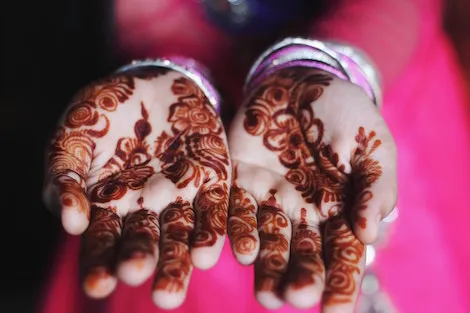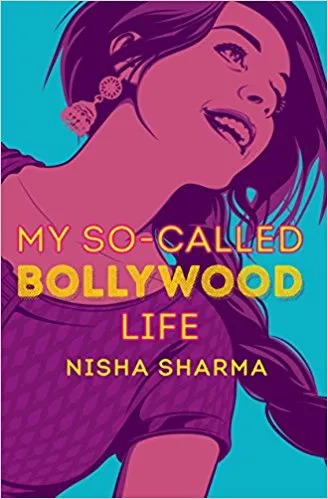
The Rise of the Indian Romance Novel: The Story of the Desi HEA

She resides in New York with her family and pooch. Follow her on Twitter @AuthorFalguni.
I grew up in Mumbai surrounded by stories. My alarm clock was my grandmother’s voice brewing the epic tales of India like morning chai. Every weekend, my movie-buff family would catch the latest Bollywood film in theatres. My teenage years were spent devouring books from cover to cover, whether for a school assignment or just reading for pleasure. But it wasn’t until much later in life, after I’d moved with my own family to New York and accidentally stumbled across an online course called “Romance Writing Secrets,” that I discovered my passion to create and tell my own stories.
I quickly realized, too, the kinds of stories I wanted to tell. I wanted to write love stories à la Jane Austen and Nora Roberts, but with Indian protagonists and Indian settings. Stories that were inspired by India’s mythology, and yet set in contemporary times. Tales that showcased the expanding Indian diaspora, and at the same time explored the current issues endemic to modern Indian society. In effect, I wanted to write the kinds of love stories I never got to read as a child or a young woman in Mumbai.
So I did.
In 2011, with zero publishing experience or industry knowledge, but with a surfeit of enthusiasm, I began shopping my newly minted “Scrabble” romance to publishers in the U.S. and India, simultaneously. I hoped to learn about the industry as I went along, because surely there were other authors writing what I’d begun to think of as “Non-Resident Indian Fiction.” But I quickly realized that despite India’s long history with storytelling and with publishing, the contemporary Indian romance market was as yet in its nascent phase, and there were only a handful of writers—worldwide—who wrote what I did, and whom I could “learn from.”
It’s no longer the case. In the seven years since my debut romance, It’s Your Move, Wordfreak!, was released in India, there has been a massive uptick in the production and consumption of Indian romance novels across the world. As always, I am fascinated by what’s happening and why, and so, I spoke to several Indian authors from the U.S. and India to get to the bottom of this wonderful phenomenon.
Rise in Feminist Ideals

Market Foresight; Supply and Demand
Like me, Sonali Dev, award-winning author of A Distant Heart, grew up in Mumbai on a steady diet of “English literature that came from the west. No one realized, or no one chose to see, that India was such a massive English-reading nation. The romance market was saturated by Mills and Boons and western classics. There was no need for more than a handful of home-grown authors.” Most of whom wrote literary fiction.
But that changed a decade ago. “India became one of the fastest growing economies in the world and publishing forecasts anticipated it to become one of the biggest book markets,” says Kishan Paul, author of The Second Wife. Publishers like Harlequin customized their Mills & Boons imprint for India, and began to scout “for writers who would write stories [specifically] for this market” by holding writing contests. This “opened a door many Indian romance novelists didn’t previously enjoy.”
My second romance novel, Bootie and the Beast, was released by Harlequin India as part of their Indian Mills and Boons list in 2014.
Cultural Evolution

While Indian Millennial Aarti V Raman, author of Still Not Over You, wants to “use her stories to frame a conversation around sensitive topics such as consent and abuse, male privilege…this is what modern Indian romance—modern India—is all about.”
Which brings us to:
Representation and #OwnVoices
In India, the sudden explosion of light-hearted romance novels can also be attributed to its rather young English-reading population, who aren’t necessarily interested in the elitist, more somber literature their parents used to read. “Books just got more relatable to the masses,” says Shilpa Suraj, author of The Girl He Left Behind. Like Bollywood movies, “authors began writing about the regular guy and girl in the metro. People began seeing themselves in these stories.”
While in the U.S., as more Indians immigrated and integrated into American communities, cultural stereotypes such as the “Arranged Marriage” needed to be de-exotified. “Indian-Americans realized that their stories needed to be told,” says Mona D. Shroff, an as-yet unpublished writer. And told right. This led to Indian romance novelists becoming part of the Diverse Books and #OwnVoices conversations.
In conclusion, though there are several factors that led to the rise of the Indian romance novel, I strongly believe that “we are the stories we tell,” and because we want to “see ourselves in a story,” it was inevitable that contemporary Indians would begin writing their stories, giving the Indian Romance Novel its very own Happy Ever After.









